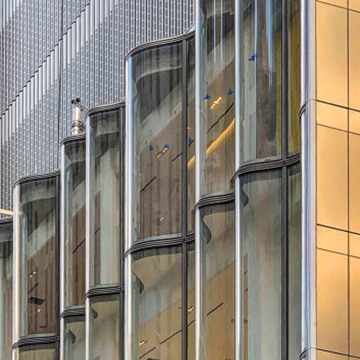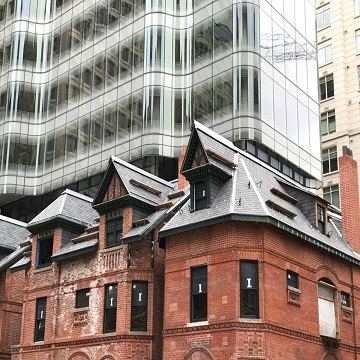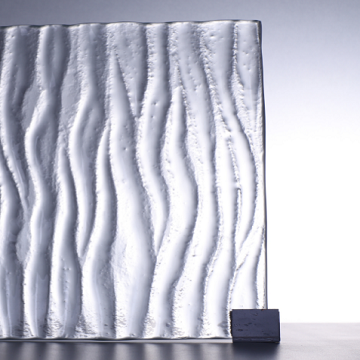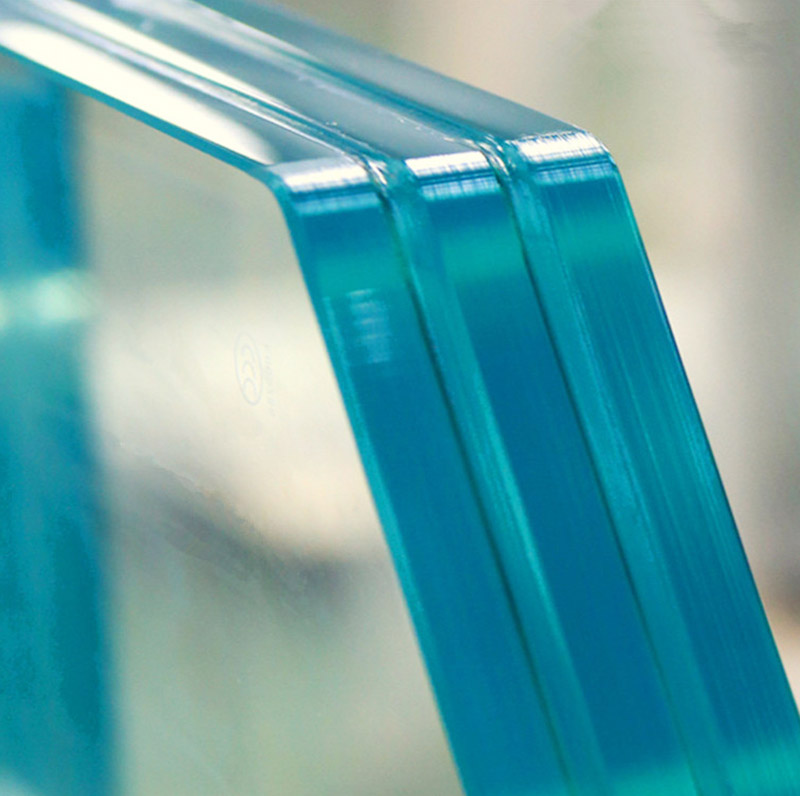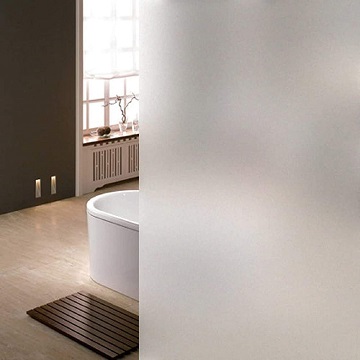Bent glass is a trend that has worked its way from sculptures and interior décor to becoming a major component of buildings’ exteriors. A modern, aesthetically pleasing design element, this glazing literally throws a curve into a façade, making people look twice and admire its unique structure. However, building professionals working with bent insulating glass (IG) must understand the process is as much a science as it is an art.
A structure made with large amounts of bent glass offers aesthetic benefits, but is also a perk for building occupants. Daylighting is proven to give inhabitants health benefits, including higher energy and comfort levels due to increased natural daylight. Today, thanks to advanced technology and improved products, it is possible to build a curved structure that is both efficient and comfortable for occupants.
A bent insulating glass project that has recently gained a lot of attention is Apple’s new headquarters in Cupertino, California. The structure is being built with all curved glass—not one piece of the building’s exterior is flat. Slated for completion next year and ringing in at nearly $5 billion, the project is an extreme example of a curved envelope and brings futuristic ideation to life.
However, is it realistic to bring this design element to buildings in an economical way that still makes it a mutually beneficial design for both the building owner and its occupants? The answer seems to be yes, but with a clause—the process must involve people with the same vision.
“Although it has been gaining popularity in the last five to 10 years, bent insulating glass is still such an unusual design element,” said Jay Gorman, senior project manager of Sciame, a New York City-based construction and development firm. “Architects and building owners want to offer something exciting that is still not seen everywhere. When it is used the right way, bent insulating glass can fulfill this need.”
Balancing aesthetics and economy
As an architect, specifier, and designer, properly balancing design and economic decisions can mean the difference between winning and losing a project. The requirements for improved thermal efficiencies and energy savings with building exteriors prove to be challenging, regardless of the glass type specified. However, bent insulating glass has additional challenges to consider, including stress, quality control during fabrication, and properly applying coatings.
So, how are irregularities minimized in a process lending itself toward inherent variation and potential flaws? Christoph Timm, an associate and façade specialist with Skidmore Owings & Merrill (SOM), says it starts with putting together the right team.
“Work with a fabricator you trust from past projects or one you know who has worked on structures you have seen and liked,” said Timm. “The earlier you can bring this team of experts together, the more economical and better off the end result will be.”
The process and standards
Bent glass is inherently stronger than flat glass—in fact, the bending process to thermally curve a pane of glass creates the shell-like form that makes the unit more resistant to bending movement. Further, the thermal bending process adds stress to the glass; therefore, the climatic load (i.e. the pressure differences between the internal gas between glass panes and the external air) in curved insulating glass differs from its flat pane counterpart.
To thermally bend the glass, a sheet of flat glass is heated up in an oven to the point where it wants to slump, or bend. Once the glass is bent to its desired shape, it is quickly quenched of its heat through a burst of cold air. This process makes the bent glass stronger.
It is important to specify building components that help take on the stress put on the glass and minimize the risks of a breakage and failure. Understanding the entire window/glazing system and how it will be installed is also important to help ensure the performance of the bent insulating glass is not sacrificed.
Until recently, the process of making bent insulating glass was viewed as prohibitively expensive and brought about too many variables to be considered for large-scale projects. Now, manufacturing is becoming more streamlined and standardized, making it a more cost-effective solution that no longer throws projects completely out of scope. Further, bendable soft glass low-emissivity (low-e) glass options have been developed that help the building meet tightening energy codes.
Supplier of The Relative glass In China
Wallkingdon Glass offers not only one of the broadest selections of architectural, decorative, and specialty glass, but we also offer services that allow our clients to do more with glass. If you want to get high quality glass and the cost effective solutions while keeping quality to highest level, send an email to enquiry@wallkingdonglass.com, we will have the valuable input and creativity of glass design experts to help you.


